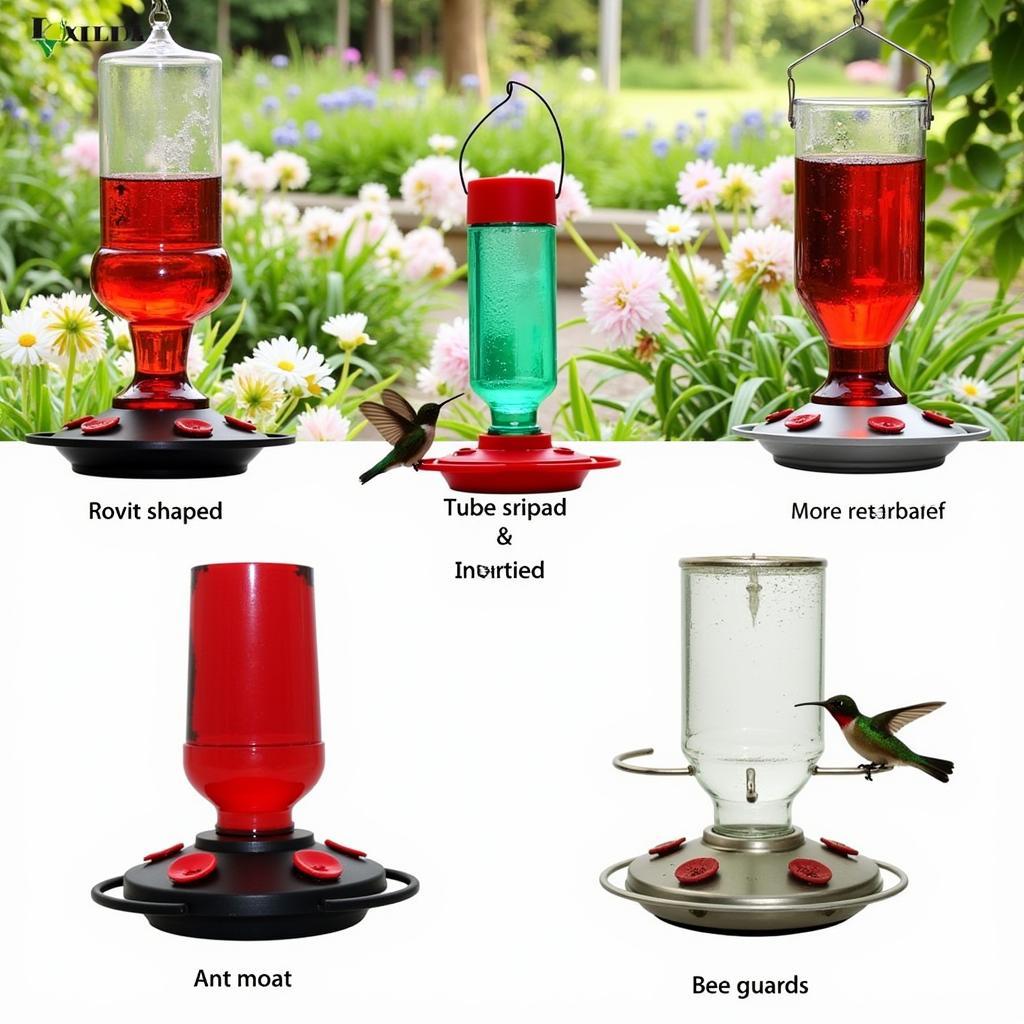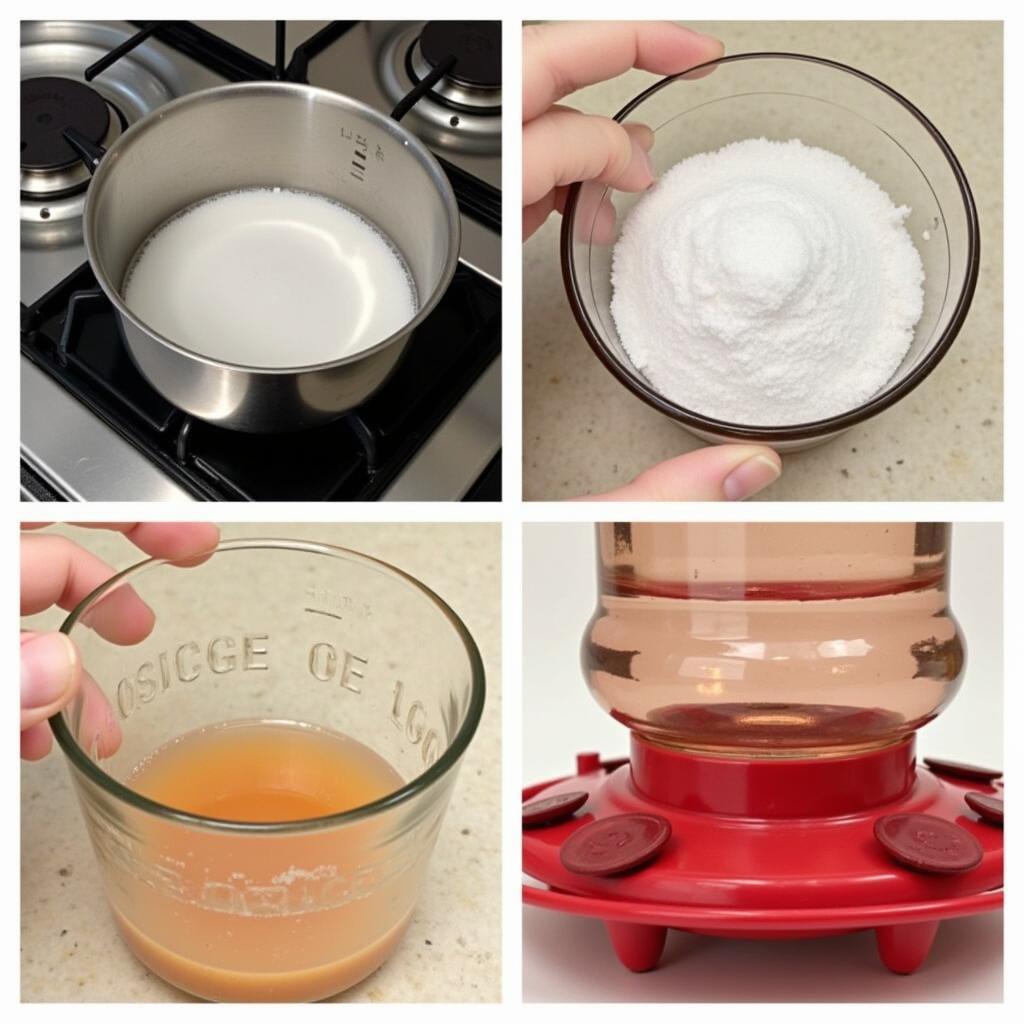Hummingbird Food Feeders are a wonderful way to attract these fascinating creatures to your backyard and enjoy their vibrant beauty up close. Whether you’re a seasoned birder or just starting out, understanding how to choose, use, and maintain your hummingbird feeders is essential for successfully attracting these tiny jewels. Let’s dive into the world of hummingbird feeding and discover how to create a haven for these delightful birds.
After setting up your first hummingbird food feeder, you might find yourself captivated by these tiny dynamos. Their iridescent feathers and acrobatic flight are truly mesmerizing. For more information on attracting birds to your garden, check out our article on morning song bird food.
Choosing the Right Hummingbird Food Feeder
Selecting the right feeder can make a big difference in how many hummingbirds you attract. There are several factors to consider, including size, material, and ease of cleaning. Smaller feeders are ideal for beginners, as they are easier to clean and refill. Larger feeders are great for established hummingbird populations, but require more frequent maintenance. Glass feeders are aesthetically pleasing and durable, while plastic feeders are lightweight and less expensive. Look for feeders with perches, as hummingbirds often prefer to rest while feeding.
Feeder Styles and Features
There are a variety of feeder styles available, from classic saucer-shaped feeders to more elaborate tube feeders with multiple feeding ports. Some feeders even incorporate ant moats or bee guards to deter unwanted guests. Consider the specific needs of your backyard and choose a feeder that suits your preferences and the local hummingbird population.
 Hummingbird Feeders in Various Styles
Hummingbird Feeders in Various Styles
“A well-designed hummingbird feeder should be easy to clean, refill, and hang. Look for features like wide mouths and removable parts for hassle-free maintenance,” advises Dr. Amelia Hernandez, an ornithologist specializing in hummingbird behavior.
Making Hummingbird Food: The Perfect Recipe
Forget the store-bought stuff! Making your own hummingbird food is simple, cost-effective, and ensures your hummingbirds are getting the best nutrition. The ideal hummingbird food recipe consists of a 4:1 ratio of water to white granulated sugar. Avoid using honey, brown sugar, or artificial sweeteners, as these can be harmful to hummingbirds.
Mixing and Storing Your Nectar
Dissolve the sugar completely in boiling water, then let the mixture cool completely before filling your feeder. Store any leftover nectar in the refrigerator for up to a week. Regularly cleaning and refilling your feeder with fresh nectar is crucial to prevent the growth of mold and bacteria, which can be harmful to hummingbirds. Want to know more about cloudy hummingbird food? Visit why does my hummingbird food get cloudy for some helpful tips.
 Preparing Homemade Hummingbird Nectar
Preparing Homemade Hummingbird Nectar
Placing Your Hummingbird Feeder for Optimal Viewing
Strategic placement of your hummingbird feeder can maximize your viewing pleasure while providing a safe haven for the birds. Hang your feeder in a shaded area, away from direct sunlight, to prevent the nectar from spoiling quickly. Choose a location that is visible from your windows but also provides some cover from predators. Consider hanging your feeder near flowering plants to create a natural and inviting environment for hummingbirds. If you’re also interested in attracting other types of birds, our song bird food article might provide some useful information.
Creating a Hummingbird-Friendly Habitat
Beyond providing food, you can create a hummingbird-friendly habitat by incorporating native plants that provide nectar and insects. Adding a shallow water source, such as a birdbath, can also attract hummingbirds for drinking and bathing.
Maintaining Your Hummingbird Food Feeder
Regular cleaning is essential to keep your hummingbird feeder hygienic and prevent the growth of harmful bacteria and mold. Clean your feeder every 2-3 days, or more frequently in hot weather. Use a solution of hot water and a mild dish soap, scrubbing all parts thoroughly. Rinse the feeder thoroughly before refilling it with fresh nectar.
“Regular cleaning is paramount for the health of your hummingbirds. A clean feeder ensures the nectar remains fresh and prevents the spread of diseases,” explains Dr. David Lee, a wildlife biologist specializing in avian health.
Conclusion
Hummingbird food feeders provide a wonderful opportunity to observe these remarkable creatures up close. By choosing the right feeder, making your own nectar, and maintaining a clean and inviting environment, you can create a haven for hummingbirds in your backyard and enjoy their beauty for years to come. Remember, providing fresh, clean nectar in a well-maintained feeder is key to attracting and supporting these tiny jewels.
FAQ
- How often should I clean my hummingbird feeder? Every 2-3 days, or more often in hot weather.
- What is the best recipe for hummingbird food? 4 parts water to 1 part white granulated sugar.
- Can I use honey or brown sugar in hummingbird food? No, these can be harmful to hummingbirds.
- Where should I place my hummingbird feeder? In a shaded area, away from direct sunlight and predators, and near flowering plants.
- What should I do if my hummingbird food gets cloudy? Clean the feeder thoroughly and replace the nectar.
- Do hummingbirds need anything besides nectar? They also need insects for protein and a water source for drinking and bathing.
- How can I attract more hummingbirds to my garden? Plant native flowering plants and provide a shallow water source.
Need assistance with your hummingbird feeders? Contact us at Phone: 02437655121, Email: minacones@gmail.com or visit us at 3PGH+8R9, ĐT70A, thôn Trung, Bắc Từ Liêm, Hà Nội, Việt Nam. We have a 24/7 customer support team ready to help.